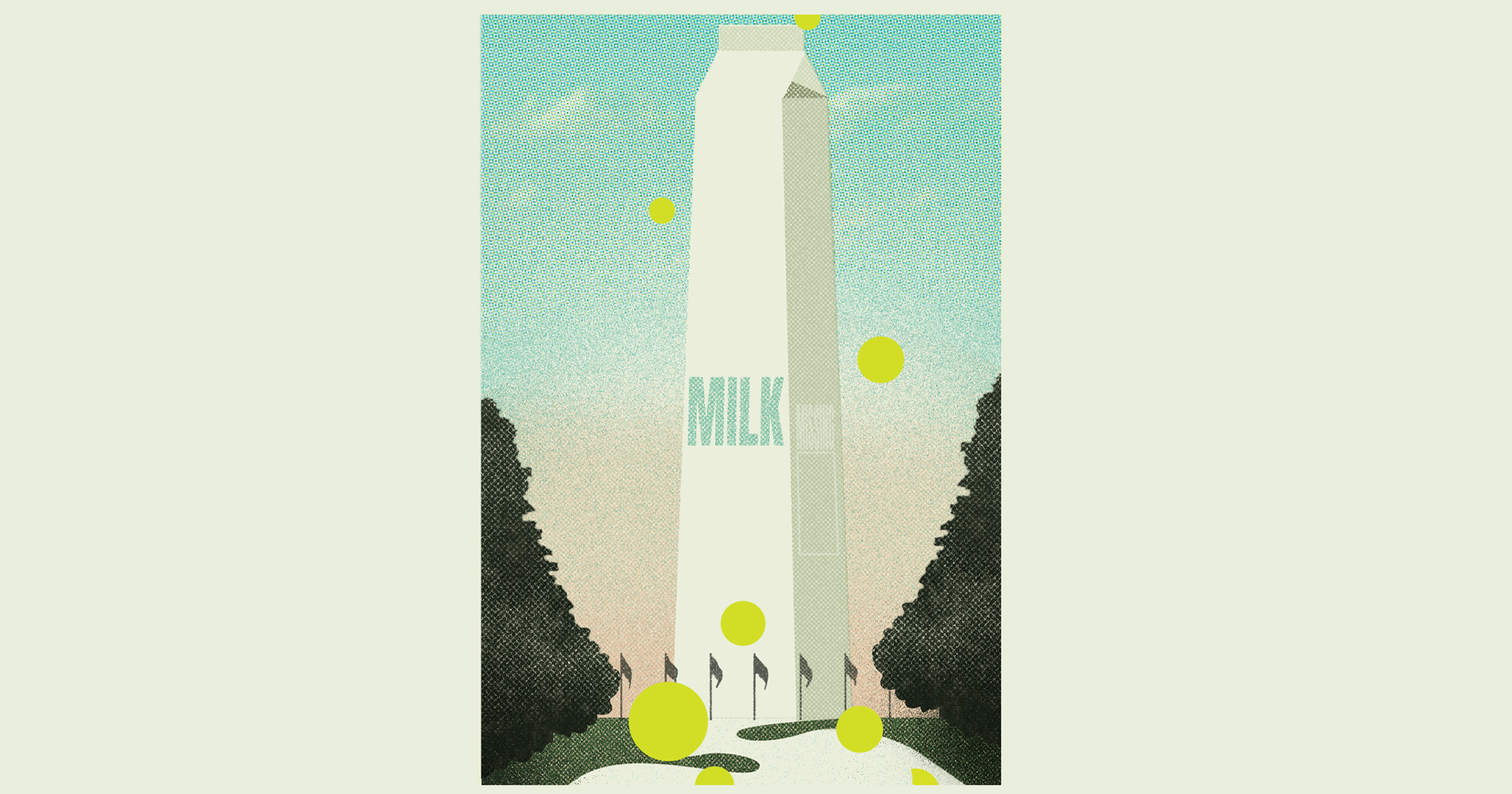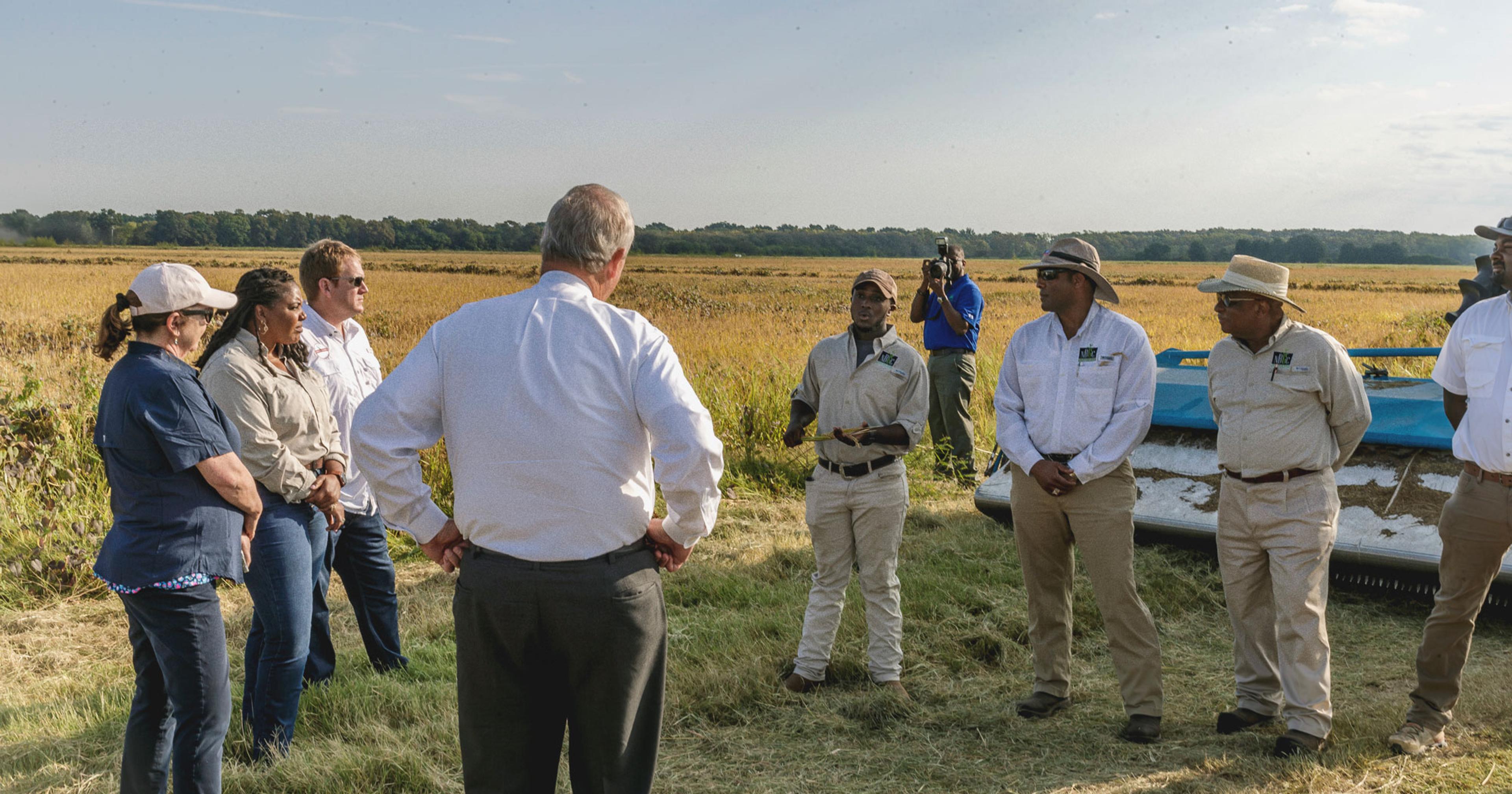The program hopes to support underserved farming communities throughout the state, while offering schools an affordable way to provide local food.
Bjorn Solberg, a vegetable processor in Halstad, Minnesota, doesn’t always get to see where his yellow, red, and russet potatoes end up. But thanks to a farm-to-school lunch program that connects local farmers to schools in the Minneapolis school district, he found himself in the lunchroom while children enjoyed his potatoes — for some, he said, it was the first baked potato they had ever had.
Solberg — who owns Hugh’s Garden, a storage, washing, and packing facility focused mainly on potatoes — said he enjoys knowing that his participation in the program helps provide nutritious, local food for students. “I believe in food access, and unfortunately, a lot of families and kids don’t have healthy food access. So when you have students in one place such as a school, it’s the best avenue to ensure that they’re at least getting one or maybe two meals that are healthy,” he said.
Farm-to-school programs prioritize getting locally produced, minimally processed products onto students’ plates in states like Maine, Minnesota, and New York. Now, Oklahoma has launched its own Local Food for Schools (LFS) program — but with a twist.
As one unique goal of the program, the Oklahoma Department of Agriculture, Food and Forestry (ODAFF) is focusing on connecting schools specifically to farmers in underserved populations to help boost their exposure and bottom lines. The USDA defines the underserved population as beginners, socially disadvantaged farmers, veterans, and others with limited resources. This encompasses farmers of color, those who have been operating ranches or farms for less than 10 years, and those who have a total household income at or below the national poverty level for a family of four.
With the new local food program, launched in January, ODAFF is homing in on this group of farmers. In Oklahoma, 13% of the population, or roughly 523,360 Oklahomans, are Native American — the second highest in the country behind California. The LFS program is specifically pinpointing the state’s Native farmers and ranchers — classified as a socially disadvantaged group under the USDA — in hopes of connecting them to schools in the region.
While the program is still in its infancy, Lee Benson, a public information officer with ODAFF, said that his department is working with Langston University Ag Extension to help promote the LFS program. So far, they have sent information about the program to multiple tribes in the state — including the Choctaw and Padawan Nation — to assist in getting their products into school meals.
And as the 8th-poorest state in the country, the program offers an opportunity for both farmers and families struggling financially to reap the benefits. Studies have shown that for low-income students, the school cafeteria can be their sole source of nutritious food, making the program all the more important.
And even the schools get a cost cut thanks to the new program.
As the 8th-poorest state in the country, the program offers an opportunity for both farmers and families struggling financially.
The program is the product of a $3 million cooperative agreement between the U.S. Department of Agriculture’s (USDA) Agricultural Marketing Service (AMS) and Oklahoma Department of Agriculture, Food and Forestry (ODAFF).
Unlike an earlier Oklahoma farm-to-school program, this one offers financial reimbursements for participating schools, allowing more schools the ability to afford fresh local food for their student lunches. With the reimbursement aspect, the departments are adding financial incentives for schools to adopt the program — meaning the school can save money while offering their students local fare.
In order to qualify for the financial aid, the products schools purchase must be sourced from farms in Oklahoma, within a 400-mile radius from the school in question. Only schools that are part of the National School Lunch Program — a federally assisted meal program that serves low-cost or free lunches to over 30 million children each day — can apply.
In states like Minnesota, similar programs have already proven their ability to positively impact both schools and underserved farming populations.
Matt Frank, market specialist at Big River Farms in Minnesota, said that although his state’s food-to-school program did not start with a specific goal of serving historically underserved farmers, the program now seeks to do so. “We’re a nonprofit incubator farm for beginning farmers, primarily farmers of color, immigrant and refugee farmers, and female farmers,” he said. “Those are the folks who are still disproportionately oppressed or marginalized within food and farming systems that lack as much access to things like land and market educational resources.”
“The producer can benefit because it opens up the market for them that they otherwise would not have had.”
So far in Oklahoma, more than 20 farms and seven schools have signed up for the new LFS program. Doug Ratzlaff, a small-scale cattle rancher who operates Hilltop Ranch and Cattle near Enid, Oklahoma, with his wife Amy, recently signed up for the new LFS program.
He said that while the deal is, of course, beneficial as a steady, reliable stream of revenue for the ranch — Hilltop provides schools primarily with ground beef and burger patties — it’s the educational and community building aspects that they love most.
“I think what got my wife and I both excited about it is, there’s an education piece, so it gives us an opportunity to go into the school,” he said. Each school can do it differently, and while some just buy the local products for the kids, many actively involve farmers in the students’ education. Ratzlaff said they have participated in “meet the farmer” days at schools, showing the children slideshows and teaching them about their ranch while they enjoy Hilltop burgers.
With these programs, children receive both locally produced, minimally processed foods — for some, the healthiest food they get all day — along with an education about where their meals are coming from. And farmers gain access to new markets for their products and a reliable stream of income — something the ODAFF sees as a win-win.
“One of the ideas is that a connection can be made between a local producer and a school district. The producer can benefit because it opens up the market for them that maybe they otherwise would not have had,” Benson said. “It’s designed to strengthen the relationship between local farmers and ranchers, local producers, and school districts. And so that way, they can make sure that nutritious foods are in each of these school districts, and not just for this school year, but for years to come.”










